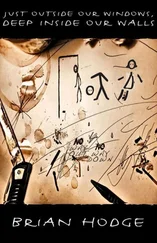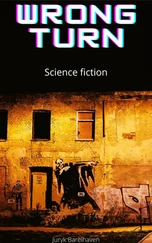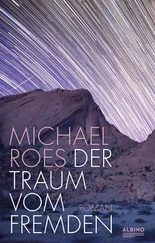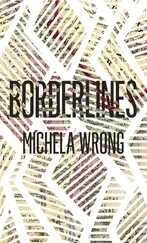When they speak in this way, Kenyans show, at least, a refreshing honesty. Public discourse is far more hypocritical. In matters ethnic, newspaper and radio station bosses adopt a policy of strict self-censorship. Telling themselves they must play their part in the forging of a young nation state, editors have for decades carefully removed all ethnic identifiers from articles and broadcasts. But it doesn't take long to work out what is really going on, or why one VIP is throwing the taunt of ‘tribalist’ – Kenya's favourite political insult – in another's face. If a surname isn't enough to accurately ‘place’ a Kenyan, laborious verbal codes do the trick. A commentator who coyly refers to ‘a certain community’, or the ‘people of the slopes’, means the Kikuyu and their kinsfolk from the Mount Kenya foothills. ‘People of the milk’ indicates the livestock-rearing Kalenjin or Maasai. If he cites ‘the people of the lake’ or ‘those from the west’, he means the Luo, whose territory runs alongside Lake Victoria and whose failure to practise circumcision – gateway to adulthood amongst Bantu communities – prompts widespread distrust. The sly euphemisms somehow end up conveying more mutual hostility than a franker vocabulary ever could. Like the ruffled skirts which covered the legs of grand pianos in the Victorian age, they actually draw attention to what they are supposed to conceal: an acute sensitivity to ethnic origin.
The fixation shocks other Africans, who privately whisper at how ‘backward’ they find Kenya, with its talk of foreskins and its focus on male appendages. ‘There's no ideological debate here,’ complain incoming diplomats, baffled by a political system in which notions of ‘left’ or ‘right’, ‘capitalist’ or ‘socialist’, ‘radical’ or ‘conservative’ seem irrelevant: ‘It's all about tribe.’ Directors of foreign NGOs puzzle over the fact that political parties, born and dying with the speed of dragonflies, either don't bother publishing manifestos, or barely know their contents. But who needs a manifesto when a party's only purpose is furthering its tribe's interests? Tribe is the first thing Kenyans need to know about one another, the backdrop against which all subsequent interaction can be interpreted, simultaneously haven, shield and crippling obligation. The obsession is so pervasive, Kenyans struggle to grasp that it may not extend beyond the country's borders. ‘So,’ commented a Kikuyu taxi driver when he overheard me expressing scepticism about the likelihood of an Obama win in the 2008 US election, ‘I see you Westerners have problems with the Luo too.’
Yet, perversely, the strength of these stereotypes is in inverse proportion to their longevity. Rooted in the country's experience as a British colony, Kenya's acute ethnic self-awareness, far from being an expression of ‘atavistic tribal tensions’, is actually a fairly recent development. While no one would claim that colonialism created the country's tribal distinctions, it certainly ensured that ethnic affiliation became the key criterion determining a citizen's life chances.
Some time towards the end of the nineteenth century, the story goes, a great Kikuyu medicine man, Mugo Wa Kibiru, woke up trembling, bruised and unable to speak. When he recovered his voice, he issued a terrible prophecy. There would come a time of great hunger, he said, after which strangers resembling little white frogs, wearing clothes that looked like butterfly wings, would arrive bearing magic sticks that killed as no poisoned arrow could. They would bring a giant iron centipede, breathing fire, which would stretch from the big water in the east to the big water in the west, and they would be intent on stripping his people of all they possessed. His people should not fight these strangers. They must treat them with caution and courtesy, the better to learn their ways. The strangers would only depart once they had passed on the secrets of their power.
His prophecy was an uncannily accurate description of the railway that would eventually stretch more than a thousand kilometres from Mombasa on the coast to Kisumu on Lake Victoria. It would never have existed had it not been for William Mackinnon, a Scottish magnate with an evangelical agenda and a romantic appetite for empire, whose imagination was fired by reports brought back by Livingstone and Stanley. The lush kingdom of Buganda, nestling on the shores of Africa's giant freshwater lake in what is today southern Uganda, was blessed with gum, ivory, copra, cotton and coffee. Opening up the hinterland would not only allow its riches to be tapped, it would also, Mackinnon maintained, mean the eradication of the vile Arab slave trade, saving the region for Christian missionaries.
The magnate and his politician friends applied a broad brush when it came to geopolitics, their rough imaginary strokes stretching across half the globe. The recently opened Suez Canal, they argued, held the key to the British Empire's all-important trade with India. If that waterway were to be guaranteed, then the headwaters of the Nile must be secured, and that meant establishing a link between Lake Victoria – source of the Nile – and the coast, controlled by the Sultan of Zanzibar. Above all, a railroad would shore up Britain's position in its long race for regional supremacy with Germany, whose agents lusted after the promised ‘new India’ just as ardently as Mackinnon.
In 1888, Mackinnon won Queen Victoria's permission to set up a chartered company, the Imperial British East Africa Company (IBEA), to develop regional trade. But constructing the ‘Lunatic Line’, as the railroad's critics dubbed it, proved beyond IBEA's capacities. By 1895 the company was bankrupt, and Mackinnon handed over responsibility to Whitehall, which announced the establishment of the British East Africa protectorate. Government surveyors set to work, importing hundreds of Indian coolies, thousands of donkeys and camels, and the millions of sleepers required for this monstrous engineering project. The colony that would come to be baptised ‘Kenya’ was created almost inadvertently, a geographical access route to somewhere seen as far more important.
The railway also played a role in ensuring that Kenya became a settler colony. As construction costs mounted, London became convinced it could only recoup its losses by developing the land alongside the track. ‘[The railway] is the backbone of the East Africa Protectorate, but a backbone is as useless without a body as a body is without a backbone,’ wrote Sir Charles Eliot, the protectorate's new commissioner, in 1901. ‘Until a greater effort is made to develop our East African territories, I do not see how we can hope that the Uganda line will repay the cost of its construction.’ The proposal seemed uncontroversial, for British officialdom saw few signs of systematic cultivation. Wildlife, in the form of the vast herds of wildebeest, zebra, buffalo and antelope, seemed to outnumber human beings. ‘We have in East Africa the rare experience of dealing with a tabula rasa ,’ wrote Eliot, in what must qualify as one of the classic mis-statements of all time, ‘an almost untouched and sparsely inhabited country, where we can do as we will.’
Eliot's snap judgement was understandable – a territory the size of France only held around three million Africans at the time, and the activities of both the Kikuyu and the Maasai had recently been curtailed by rinderpest, smallpox and drought. But in fact, much of Kenya's best land was already in use. To the north of the mosquito-plagued stretch of marshy land that would become the city of Nairobi, the well-watered foothills of Mount Kenya were being intensively farmed by the Kikuyu; the nomadic Maasai drove their cattle the length of the Rift Valley; and on the western fringes of this natural cleft Nandi-speaking tribes – later to be rebaptised the Kalenjin – tended crops and livestock. Taming the locals would turn out to require a series of ruthless punitive military expeditions, in which homesteads were set ablaze, herds captured and chiefs assassinated.
Читать дальше












